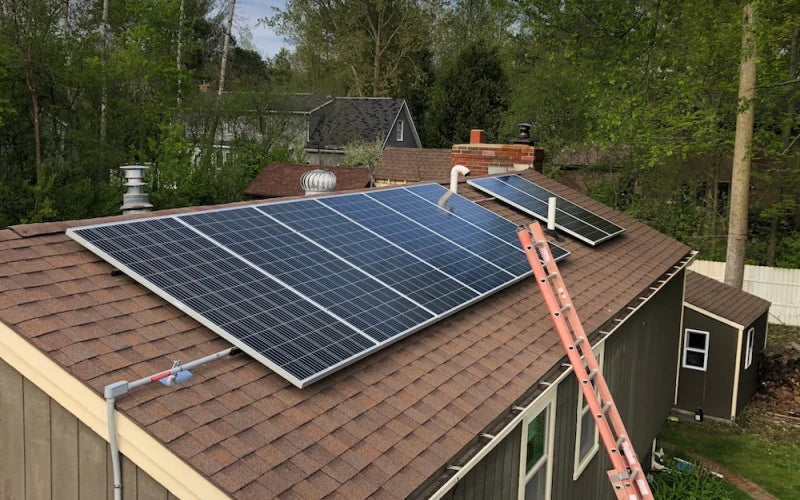
Solar energy has gained significant popularity in recent years as a clean and renewable source of power. As more customers consider purchasing solar energy-related products, it's important to understand the limitations of certain environments for optimal solar panel efficiency. One such environment is the desert. While deserts may seem like ideal locations for harnessing solar power, there are several challenges that make it less than ideal. In this blog post, we will explore the limitations of desert conditions for solar panel efficiency and discuss the environmental concerns associated with setting up solar panels in these arid regions.
Limitations of Desert Conditions for Solar Panel Efficiency
a) Extreme Temperatures: Deserts are known for their scorching hot temperatures during the day and extreme drops in temperature at night. These temperature fluctuations can adversely affect the performance and lifespan of solar panels. High temperatures can cause the panels to overheat, leading to a decrease in efficiency and potential damage to the system. Similarly, the rapid cooling at night can subject the panels to thermal stress, impacting their longevity.
b) Dust and Sand Accumulation: Deserts are often characterized by their vast expanses of sand and dust. While solar panels are designed to withstand a certain level of dirt accumulation, excessive dust and sand can hinder their efficiency. Dust particles can settle on the surface of the panels, reducing the amount of sunlight that reaches the photovoltaic cells. This accumulation can create a barrier between the sun and the panels, resulting in decreased energy production.
c) Thermal Cycling: The extreme temperature variations in deserts can cause thermal cycling, which refers to the expansion and contraction of materials due to temperature changes. This repetitive stress can lead to microcracks and degradation of the solar panel components over time. Thermal cycling can significantly impact the overall performance and lifespan of the panels, making the desert environment less than ideal for long-term solar energy production.
d) Water Scarcity: Deserts are inherently water-scarce regions, and the installation and maintenance of solar panels require adequate water resources. The cleaning of panels to remove dust and debris buildup is essential for optimal efficiency. However, the scarcity of water in deserts makes this task challenging and costly. Without proper cleaning, the performance of the panels can decline further, leading to reduced energy generation.
e) Ultraviolet (UV) Radiation: Deserts receive high levels of ultraviolet (UV) radiation due to the clear skies and lack of atmospheric pollution. While solar panels are designed to withstand UV radiation, prolonged exposure to intense UV rays can degrade the materials used in the panels. Over time, this degradation can impact the efficiency and lifespan of the solar panels, necessitating more frequent maintenance and replacement.
Environmental Concerns and the Impact on Desert Ecosystems
a) Land Use and Habitat Disruption: Setting up solar farms in deserts requires a substantial amount of land. Large-scale solar installations can disrupt the natural habitat and ecosystems of desert plants and wildlife. The installation process may involve clearing vegetation and displacing wildlife, leading to a loss of biodiversity and ecological imbalance.
b) Soil Degradation: Solar panels require a stable foundation for installation. In the desert, the process of preparing the land for solar farms can result in soil degradation. Erosion and the removal of topsoil can reduce the fertility and ability of the land to support vegetation growth. Soil degradation can have long-term consequences for desert ecosystems and affect the overall health of the environment.
c) Water Use: As mentioned earlier, water scarcity is a significant challenge in deserts. The installation and operation of solar farms require water for cleaning and maintenance purposes. In regions where water is already scarce, diverting it for solar panel upkeep can further strain local water resources. This diversion may have a detrimental impact on both human populations and wildlife that rely on these water sources.
d) Impact on Migratory Species: Deserts are often part of critical migratory routes for various bird species and other wildlife. The installation of solar farms can disrupt these migration patterns and cause disturbances to the natural movement of these species. Light pollution and other associated human activities in and around solar farms can also have adverse effects on migratory patterns and potentially lead to population decline.
e) Microclimate Alteration: The installation of large-scale solar farms can alter the microclimate of desert regions. Solar panels can create shading and alter wind patterns, which can affect local temperature and humidity levels. These changes may have cascading effects on desert flora and fauna, leading to shifts in plant distributions and potentially impacting the delicate balance of desert ecosystems.
Why is the Extreme Heat in Deserts Problematic for Solar Panel Efficiency?
The extreme heat experienced in deserts poses significant challenges for solar panel efficiency. Solar panels operate most efficiently at lower temperatures, and high heat can decrease their overall performance. The efficiency of photovoltaic cells decreases as temperatures rise above their ideal operating range. This decrease in efficiency directly affects the amount of electricity generated by the solar panels. Additionally, excessive heat can cause the components of the panels to expand, potentially leading to damage and decreased lifespan.
In conclusion, while deserts may initially seem like ideal locations for solar panels due to their abundant sunlight, the extreme temperatures, dust accumulation, thermal cycling, water scarcity, and other factors present significant challenges. Furthermore, the installation of solar farms in deserts can have adverse environmental impacts, including habitat disruption, soil degradation, and water use concerns. As customers explore solar energy options, it is essential to consider these limitations and environmental concerns to make informed decisions about the most suitable locations for solar panel installations.

0 Kommentare